At the Gentleman’s Gazette, we strive to regularly provide remarkable fashion illustrations from a bygone era. These masterpieces, in their own right, were often published in magazines such as Esquire, Apparel Arts or the German Herrenjournal. In the US, artists like Laurence Fellows, Robert Goodman and Leslie Saalburg were certainly among the best fashion illustrators. While so many admire these old illustrations, hardly anything is known about the artists themselves. Today, we want to introduce Leslie Saalburg, his fashion illustration techniques, views, as well as his lifestyle.
Leslie Saalburg – The Man
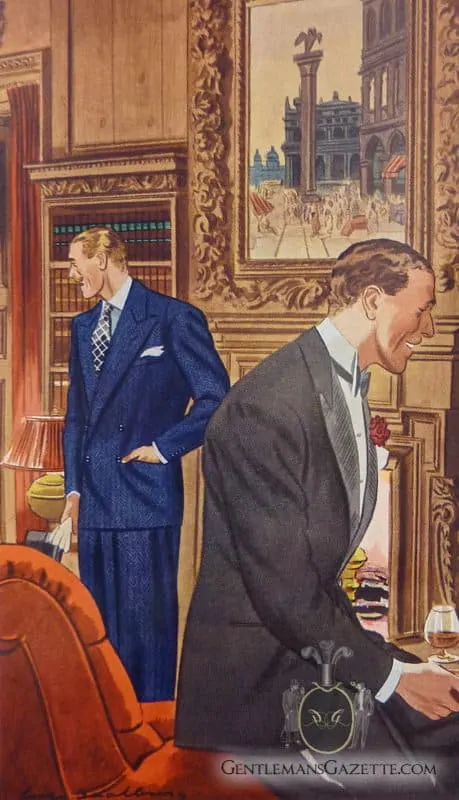
The famous George Frazier once said of Leslie Saalburg, in a neat summary of his legacy, that “He has been both an influence on, and an example of, the best practice of the art of wearing men’s clothes”.
Leslie Saalburg was born in London in 1897 to American parents. His father was a political cartoonist for a San Francisco paper, as well as for The Chicago Examiner and The New York World.
As such, it does not come as a complete surprise that Leslie Saalburg was already drawing pencil sketches and cartoons of elegant men in evening dress clothes and top hats at the age of five. Throughout his career, fashion publishers hired him for his authentic, exact drawings and paintings of the beau monde. He was likely so successful in this art form, among other reasons, by the fact that he followed style as ardently as he portrayed it.
Leslie Saalburg believed throughout his life that society was not really constituting progress. In the manner of Elbert Hubbard, William Morris or Ralph Adams Cram, he was convinced that the glorious twenties and thirties had more to offer with regard to workmanship, design, style, dress codes, and savoir vivre. In addition, in his mind, elegance was fading despite its vital quality in the fashion world.
Elegance And Style – The World of Leslie Saalburg
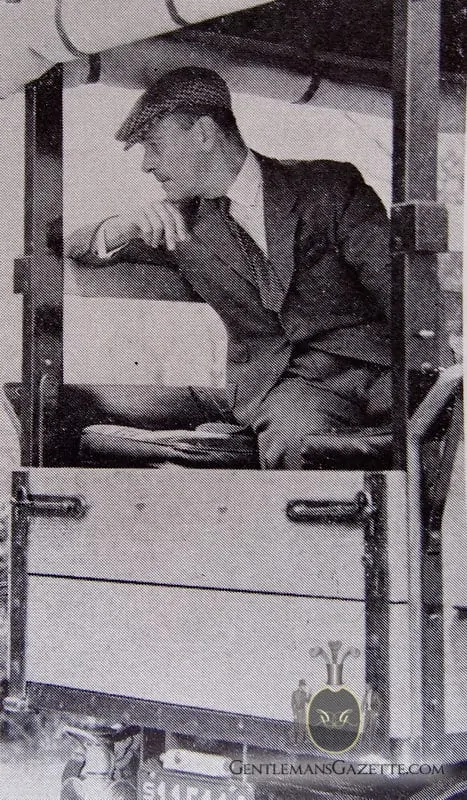
Saalburg was well aware that the average person in the 1960’s was richer than ever before, but was also unable to afford the servants that had made ‘gracious living’ possible.
Saalburg emphasized that elegance was something only few would be able to achieve, and Royal Ascot remained one if his few remaining bastions of elegance. Even today, every man in the Royal Enclosure – the area where the Queen sits – must wear a morning coat and a top hat at all times.
While Americans at the time usually preferred a new, crisp look, Englishmen – including royalty – could not care less about newness. They had their shirt collars and cuffs exchanged – sometimes a little too late, wore patches on coats, and had shoes that had been repaired a few times too many. Saalburg was always a strong supporter of the English point of view – he called it the easy look.
In an article Saalburg once wrote, he remarked: “The English make an art of dressing well for every occasion. To an Englishman, dressing well involves restraint. The result is elegance… Americans are inclined to associate English elegance only with formality. This is a mistake. A hacking jacket has as much elegance as a morning coat. The Englishman’s country look has just as much distinction as his town appearance. The right thing, worn with the easy assurance that it is right, is what makes elegance … I have noticed that what Americans think of as a “fit” is not what the English tailor is after.
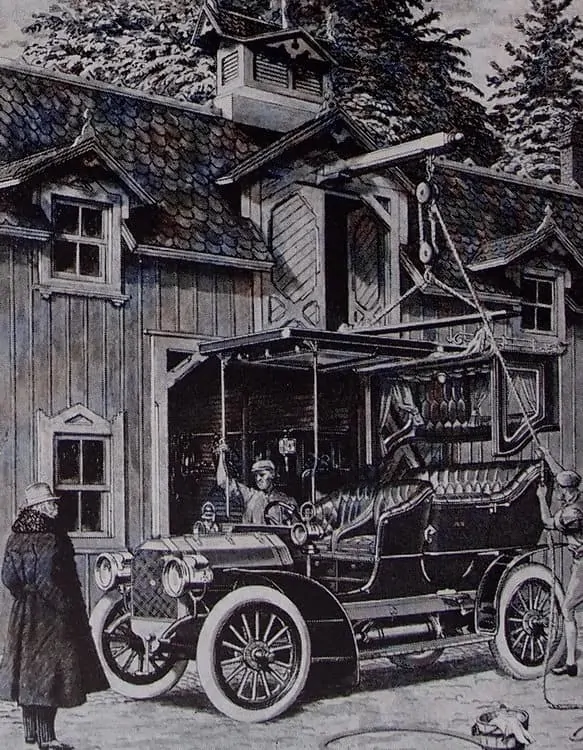
English tailoring is not a “fit”, but an effect… Proportion is the aim of the English tailor; proportion is probably the main ingredient in the elegance of the Englishman’s dress… An Englishman does not throw clothes away. He wears them until there is almost nothing left of the original garment. This is not because of economy, much as it may seem so to an American, but because the Englishman likes the clothes he buys.”
Knowing Saalburg’s outlook and temperament, we can better appreciate his illustrations. Naturally he is attracted to the theater, the track, restaurants, auto meets, and to the tradesmen who outfit his models: the tailor, the saddler, the coach maker-in fact, anyone who produces things conscientiously, for quality rather than quantity.
Saalburg And Cars
Saalberg drew and painted motor cars by the hundreds. Throughout his career, Saalburg illustrated them either in ads or for pleasure. However, he always thought that people did not drive their car for pleasure: “Cars are made today to take you to the station. There is no pleasure on the road, either here or in Europe. Today’s cars are a bore, too bulbous and falsely streamlined. The old cars had character; they were elegant because they were a carry-over from coaches. Their seats were more comfortable, even though the stiffer springs rendered the ride somewhat less so.”
Interestingly, Saalburg did not have a clue about cars: “I like their appearance and the pleasant nostalgia induced by examination of the older cars. I was unfavorably impressed when I learned that Citroen discharged seven hundred and fifty expert wood workers years ago on switching from body building by hand to assembly-line production. These men were coach builders.”
Leslie Saalburg – The Fashion Illustrator
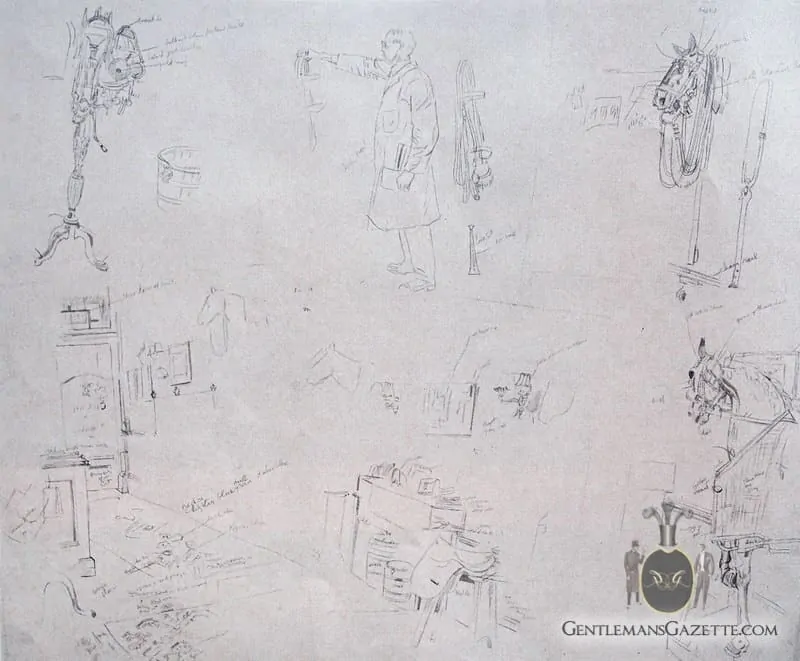
Leslie Saalburg provided illustrations for Esquire, Apparel Arts, Town and Country, Vogue, Vanity Fair, Holiday, Collier’s, as well as other periodicals, for as long as two decades in some cases.
The hallmark of Saalburg’s work has always been his attention to detail. Everything is done meticulously, in truly elegant fashion.
Saalburg’s art education was remarkably short and consisted only of three months at the Art Students League in New York in 1914. Saalburg claims he learned his trade simply by drawing and painting continuously, starting at the tender age of five.
His commercial career started with drawings of ladies’ coats hung on forms for a dress manufacturer at ten cents apiece. Later, he was hired by Ward and Gow, where he designed subway advertisements because art work was provided for free to any advertiser who would buy space, at the time.
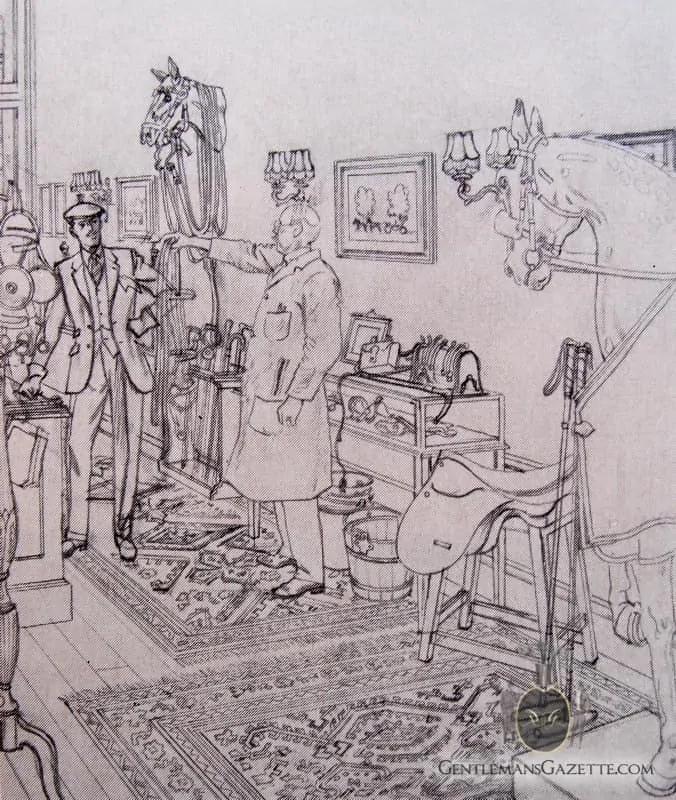
At the age of twenty, Saalburg became a freelance fashion illustrator for women’s fashions and did several covers for Vogue. From the point in time, he never lacked work. Though Europe never attracted him in terms of art, he had nothing but the utmost admiration for its Old World traditions. After Saalburg visited Europe in 1922, he left his home in NYC nearly every year in order to spend some time in Europe – he was particularly attracted to Paris and England.
How A Fashion Illustration Comes To Life
In order to best understand the way Saalburg created an illustration, a description of his work with the saddler Champion & Wilton, Ltd., provides an excellent example. This long-defunct saddler was originally founded in 1780 and had their premises in Oxford Street, just opposite of the luxury department store Selfridges, in London’s West End. The sketching project consumed an entire day!
Generally, Saalburg would decide upon the arrangement of the illustration with the aid of a view finder (a cardboard pierced with a small rectangle). Subsequently, he would draw the entire scene very carefully in severe line. Once the layout was completed, he would carefully create detailed individual drawings including the fixtures, the furniture, tableware, clothing etc. All of this preliminary sketching is done in pencil on large paper.
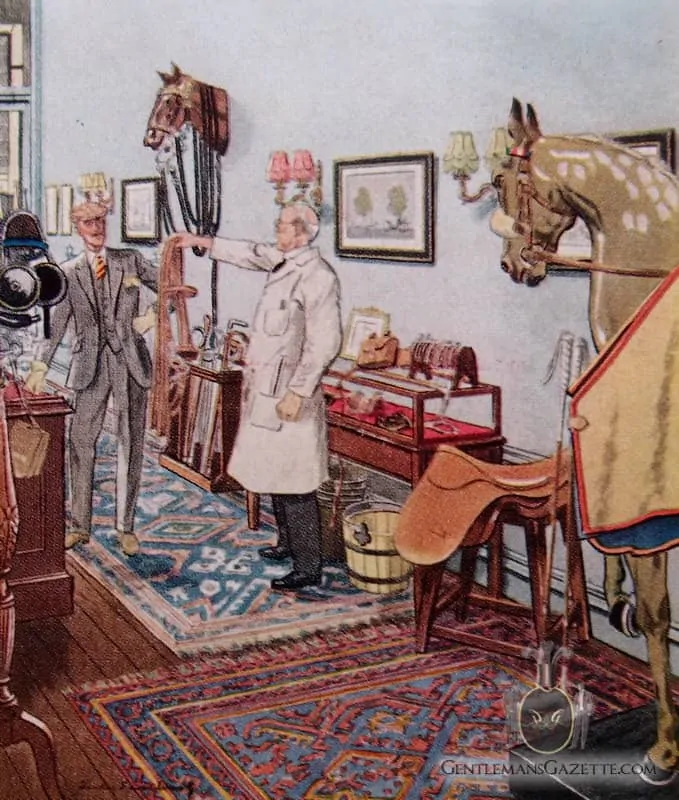
Back at his studio, Saalburg would layout the illustration in pencil in the required size. His layout was always carefully traced on an overlay of tracing paper, the tracing paper covered on the back with soft pencil strokes, and the whole transferred to the final illustration sheet with a hard pencil. Once finished, Saalburg would redraw the picture in pencil over the faintly traced pencil lines and then redraw it once more in pure line with black India Ink.
As you can imagine, Saalburg planned everything very carefully. He would prepare a perspective layout for each object, building, car, person including horizon lines, points of vision, and vanishing points. Surprisingly, Saalburg often claimed that drawing can be more accurate than photography for lenses often distort perspective. Consequently, he would always double check the real object later if he was only provided a photo.
Virtually all of Saalburg’s illustrations were carried out in the same manner!
Overall, Saalburg was a superb artist who not only knew how to draw well, but was also an expert on the subject matter, which made for very authentic illustrations that were true to the last detail. Now that you know how much time and effort actually went into Saalburgs illustrations, you hopefully appreciate them even more!
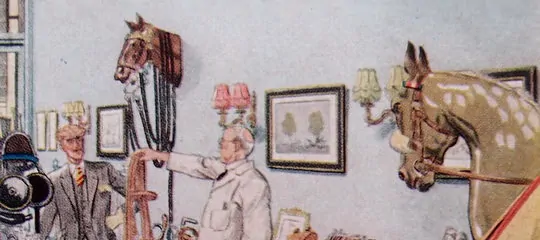
Reader Comments
Comments are closed.